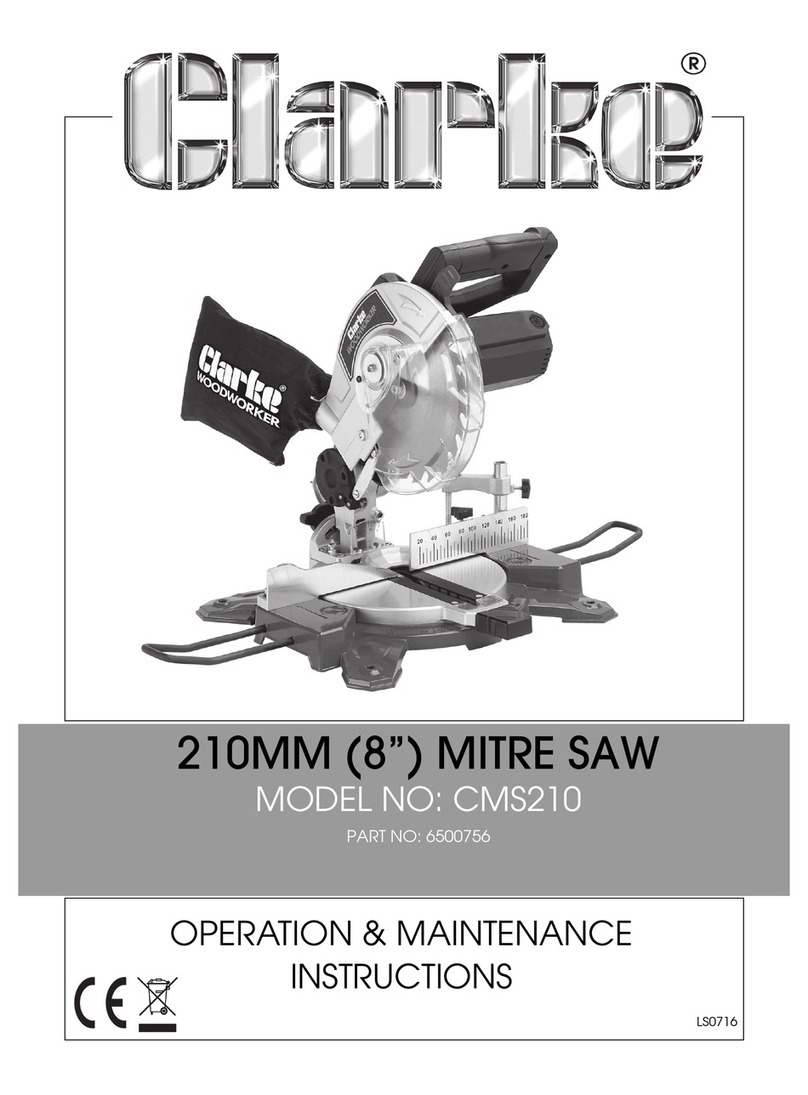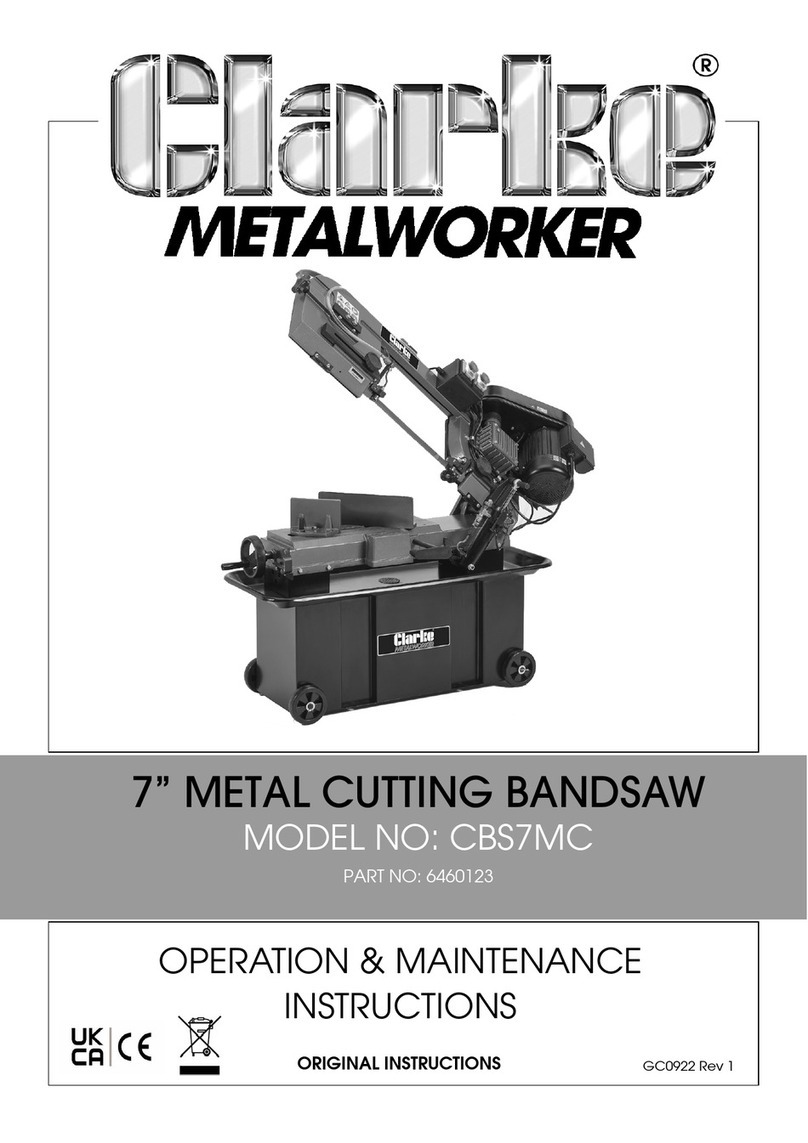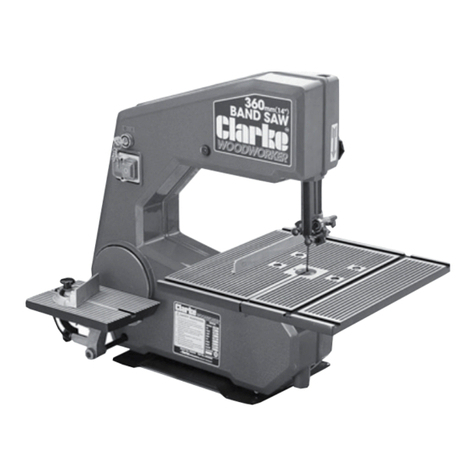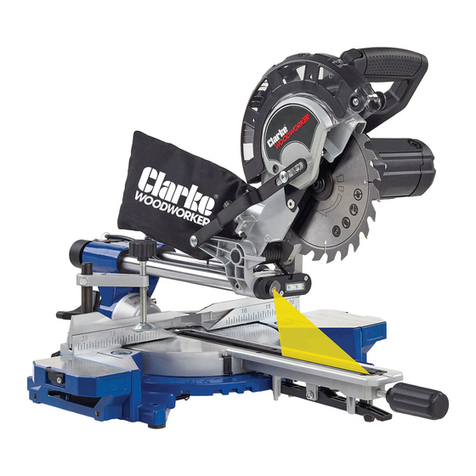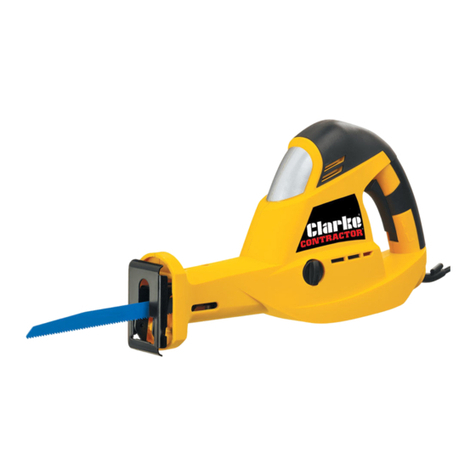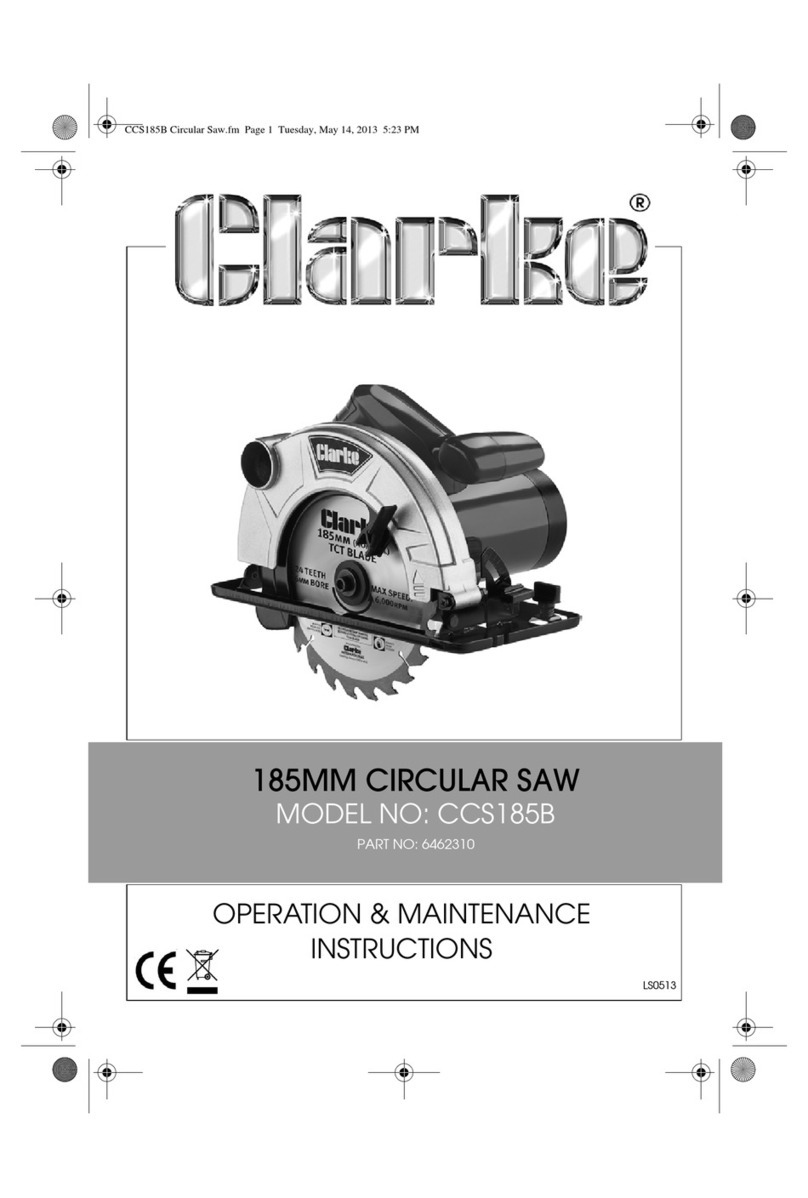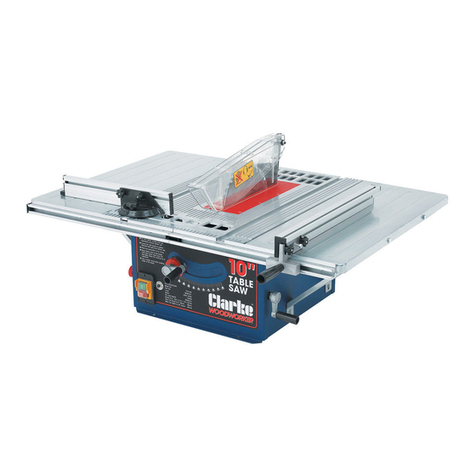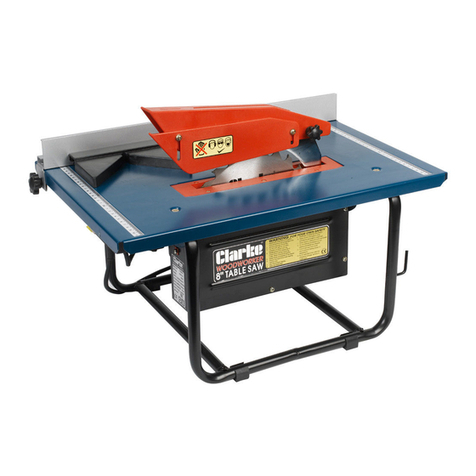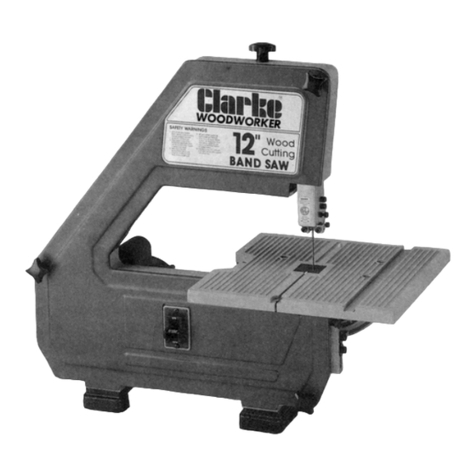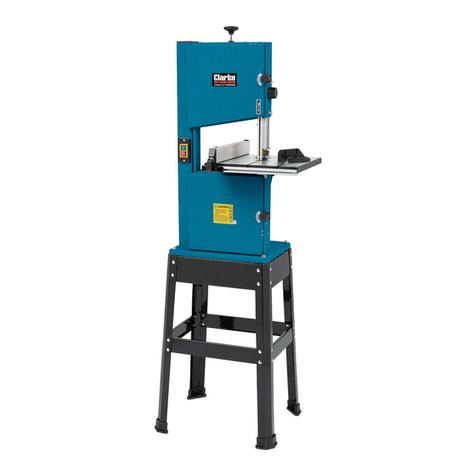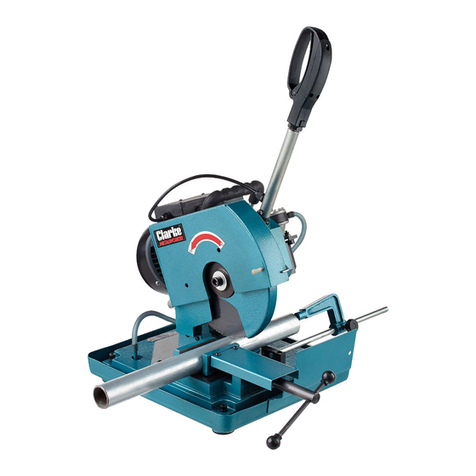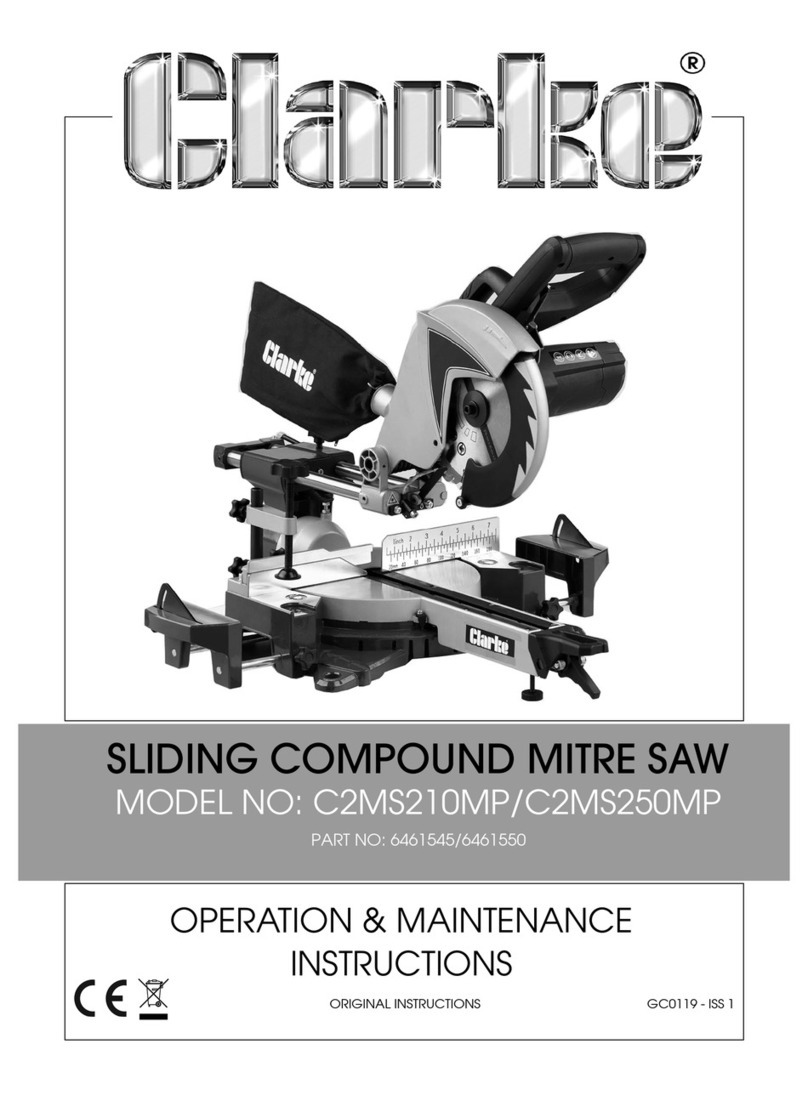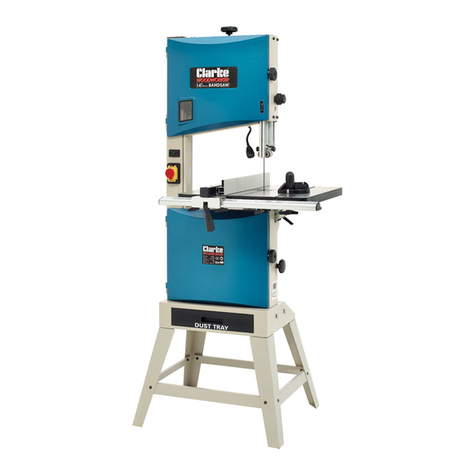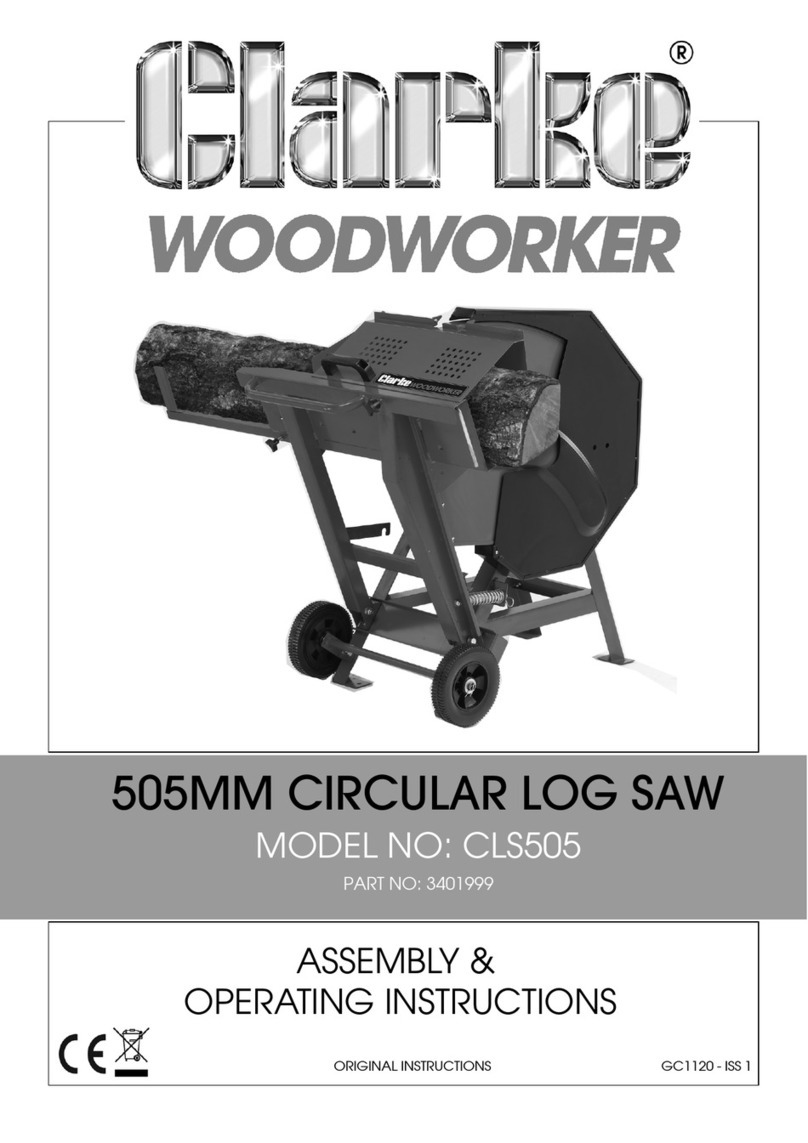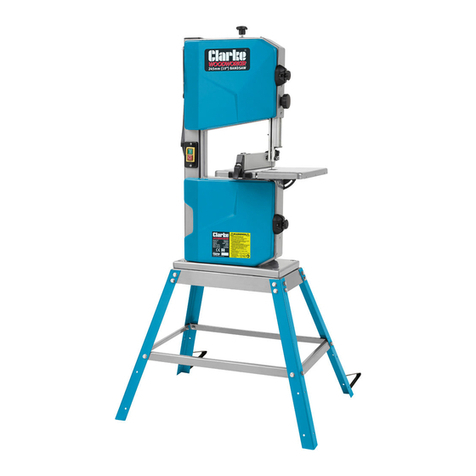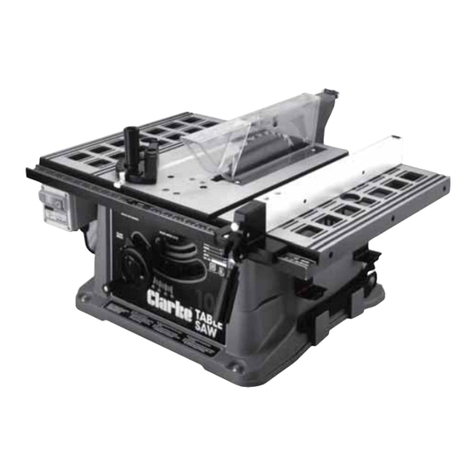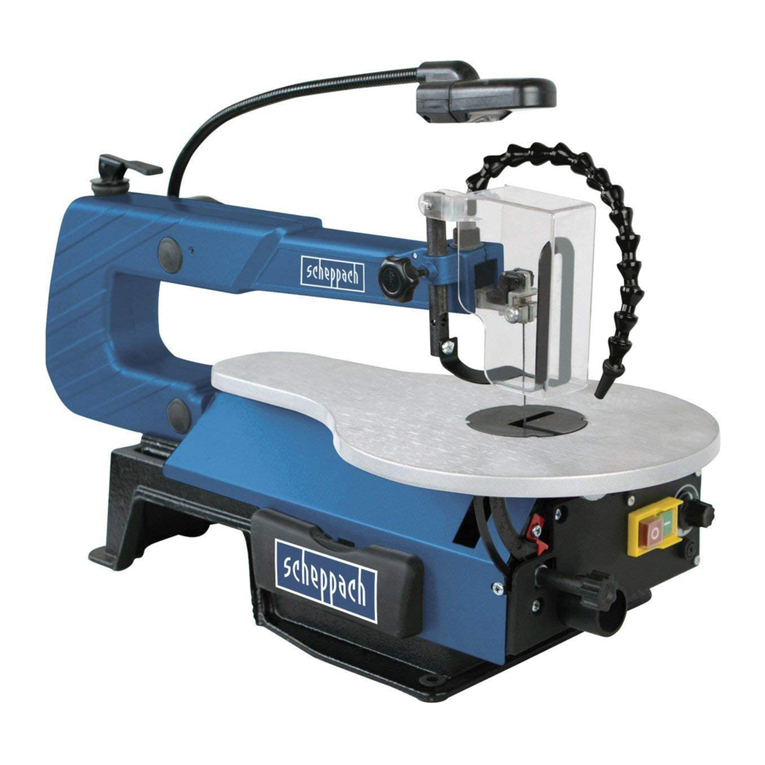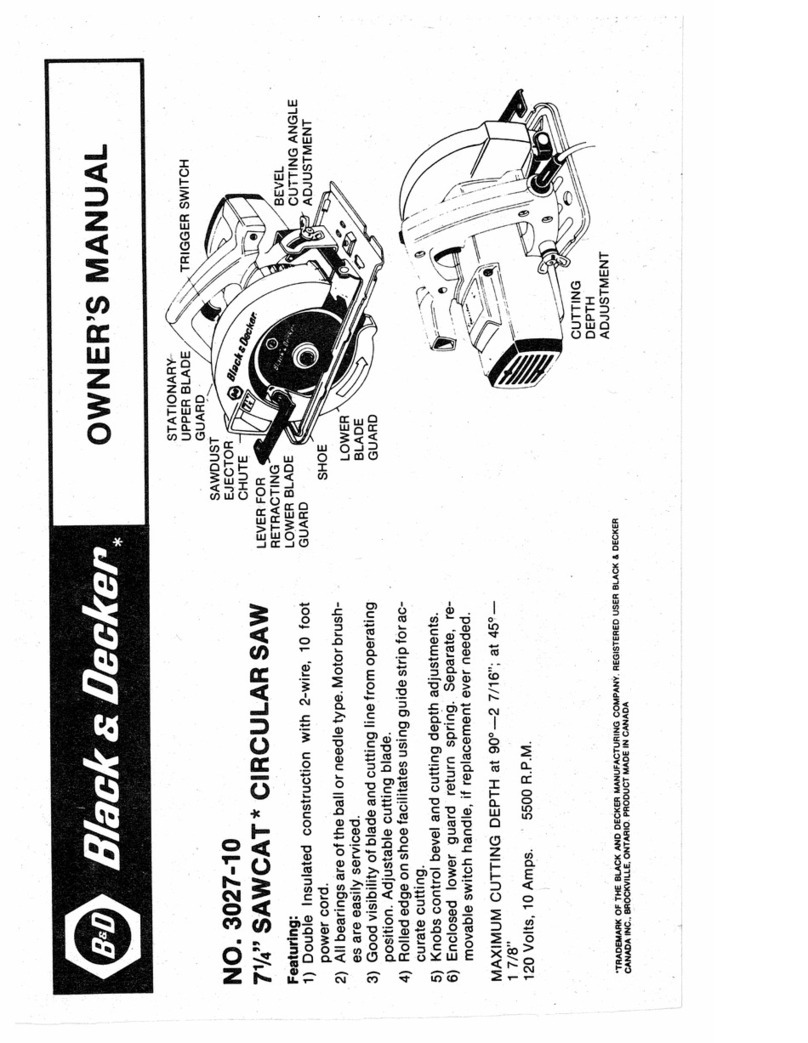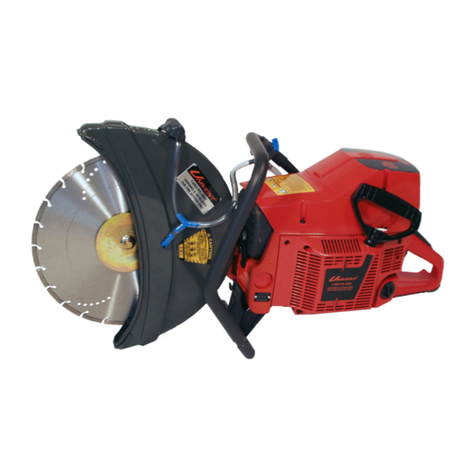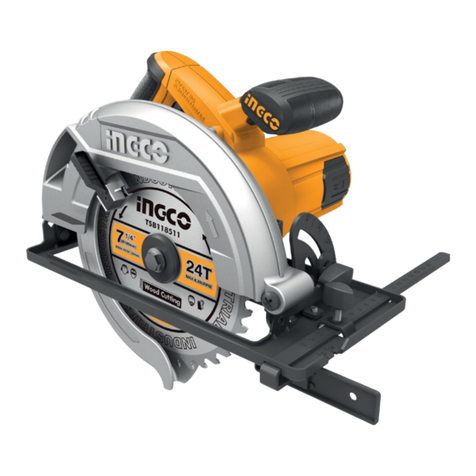
MAINTAIN MACHINE IN TOP
CONDITION.
Keep tools sharp
and clean for the
best and safest
performance.
Follow
maintenance
instructions.
READ and BECOME FAMILIAR with the entire
operating manual. Learn the machines
applications and limitations as well as the
specific potential hazards peculiar to it.
ALWAYS KEEP GUARDS in place and in working order.
ALWAYS WEAR EAR PROTECTORS/DEFENDERS.
Considerable noise is generated by this
type of equipment.
Ear protection should be used at all times
ALWAYS ensure that ADEQUATE LIGHTING is
available. A minimum intensity of 300 lux
should be provided. Ensure that lighting is
placed so that you will not be working in your
own shadow.
CHECK for DAMAGE. Before using the
machine, any damaged part, such as a
guard etc., should be checked to ensure that
it will operate properly, and perform its
intended function. Check for alignment of
moving parts, breakage of parts, mountings,
and any other condition that may affect the
machines’ operation. Any damage should be
properly repaired or the part replaced. If in
doubt, DO NOT USE the machine. Consult your
local dealer.
BE AWARE that accidents are caused
by carelessness due to familiarity.
ALWAYS concentrate on the job in
hand, no matter how trivial it may seem.
HANDLE WITH EXTREME CARE Whenever
transporting or installing machinery,
and always use a lifting tool.
KEEP CHILDREN AWAY.
All visitors should be kept
a safe distance from the
work area,
especially whilst
operating the
machine.
AVOID
ACCIDENTAL
STARTING.
Ensure the
switch is OFF
before
plugging in to
mains.
MAKE YOUR WORKSHOP
CHILDPROOF.
With padlocks, master
switches where
appropriate, or by
removing starter keys etc.
DRUGS, ALCOHOL, MEDICATION. Do not operate
machine while under the influence of drugs, alcohol
or any medication.
NEVER LEAVE MACHINE RUNNING
UNATTENDED. Turn power OFF. Do not
leave machine until it comes to a
complete stop
NEVER STAND ON THE MACHINE. Serious injury could
occur if the machine is tipped or if a cutting tool is
accidentally contacted. Do not store materials above
or near a machine, such that it is necessary to stand
on the machine to reach them.
USE ONLY RECOMMENDED
ACCESSORIES. The use of improper
accessories could be hazardous.
WEAR
PROPER
APPAREL.
Loose
clothing or
jewellery
may get caught in
moving parts. Wear
protective hair covering to
contain long hair.
••
•
•
•
•
•
•
•
•
•
•
•
•
•
5
